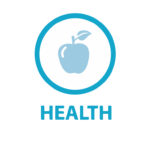
Breastfeeding
Birth to Age 3
Note
*: Statistically unstable
Race-Ethnicity categories:
Hispanic: all persons of Hispanic origin of any race, including Other and Unknown race. Multi-Race: those of non-Hispanic origin who reported more than one race. The remaining groups are of non-Hispanic origin who reported a single race: AIAN: American Indian or Alaska Native; Asian, Black, NHPI: Native Hawaiian or Other Pacific Islander (Pacific Islander), White
Source:
California Department of Public Health, Center for Family Health, Maternal, Child and Adolescent Health Division, Breastfeeding Initiation Dashboard, Last Modified January 2024. go.cdph.ca.gov/Breastfeeding-Initiation-Dashboard (Download date: 4/1/2024)
What is the indicator?
This indicator—the percentage of mothers who initiate breastfeeding of newborn in hospital—estimates what proportion of infants receive any breast milk. Recommendations call for 6 to 12 months of breastfeeding, but data on continuation rates are not available. These data are collected on newborn screening forms and reported by the California Department of Public Health, including virtually all births in California (military hospitals and home births are excluded).
Why is this important?
Breastfeeding is among the most effective and cost-effective preventive health practices and offers many health benefits for both babies and mothers. For babies, it provides the ideal nutrition and enhances immunity to disease. Breastfeeding also decreases the rate and severity of diarrhea, respiratory and ear infections. Breastfeeding is associated with healthy development, reduced risk of lifelong chronic health problems such as cardiovascular disease and obesity. Benefits for the mother include quicker recovery from pregnancy, and lower risk of breast, ovarian, and uterine cancer. Lastly, breastfeeding costs less than formula and breastfeeding mothers miss less work missed due to child illness.
What strategies can make a difference?
These evidence-based strategies are used across the country to increase breastfeeding:
- Foster breastfeeding advocacy and offer educational resources pre- and post-partum (e.g., integrate lactation consultants into prenatal clinics and hospital teams).
- Facilitate enrollment of qualifying families in the Special Supplemental Nutrition Program for Women, Infants, and Children (WIC), providing encouragement, education, and assistance for breastfeeding.
- Deliver continuous breastfeeding assistance, especially through skilled lactation consultants and home visitation program personnel.
- Provide culturally and linguistically tailored resources for mothers.
- Eradicate racial, ethnic, and income-based disparities in breastfeeding promotion and education by addressing provider biases and ensuring equitable treatment.